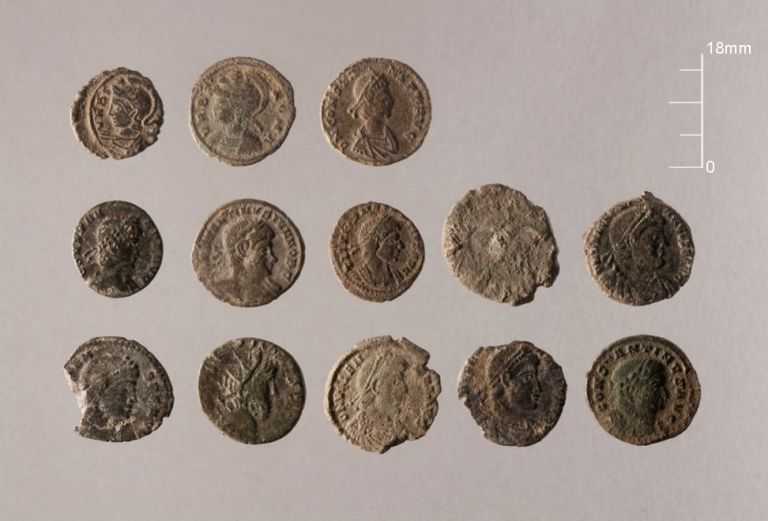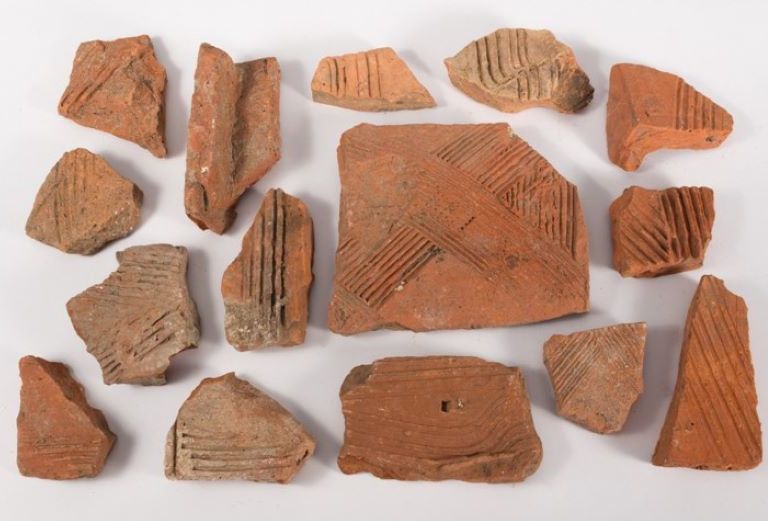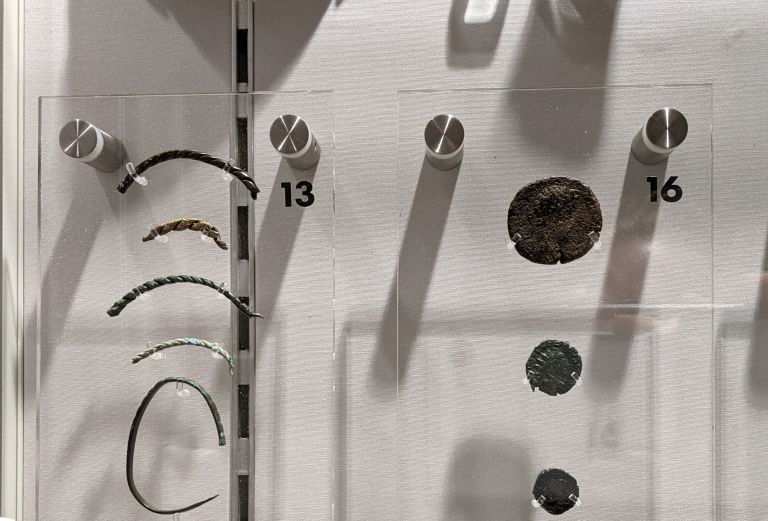
Alexis Haslam, community archaeologist
Fulham Palace’s early history is really exciting for a number of reasons. The first archaeological excavation undertaken on the site took place in 1972-3 at the southern end of the walled garden and across part of the moat. The dig turned up lots of late Roman pottery, various small finds, bracelets and coins. This was the first evidence of Roman activity we were aware of in Fulham.
Whilst there are other ditches and field systems around our site, the main evidence for Roman settlement here at the Palace is at the back towards All Saints church. This seems to have been the centre of late Roman occupation here. Why did Fulham develop as a late Roman settlement? Why would the Romans choose to settle here in the 3rd and 4th century? All the pottery and coinage that we find here is from that period; yet there doesn’t seem to be any archaeological evidence of earlier Romans here.

The reason behind this lies in the power shift after the Roman occupation of Londinium. The enormous pressures on an expanding empire required far more grain to be produced to feed troops on the frontiers such as the Rhineland and Hadrian’s Wall. There was lots of money to be made from building a settlement in an agricultural environment – Fulham was right on the river and easily fordable over to Putney in a time when there were few easy river crossings. Fulham was a perfect site for the Romans to produce and maybe even take in the grain that was being grown further upriver in Oxfordshire and the West Country, before being shipped down the Thames and out to the continent.
The coinage we have found on this site matches coinage from other rural sites. The pottery we have found is mostly pieces of jars: urban sites have a fairly even split of jars and dishes, whereas rural sites predominantly have jars. Bearing all this in mind, the evidence points to Fulham Palace being a rural site here in late Roman Britain. There is a distinct possibility that there was a villa here because archaeologists have found plenty of ceramic building material (tile).

However, if you’ve studied your history, you know that eventually everything in the Roman empire started to fall apart. The Roman empire split, collapsed, and by AD 410 we already have evidence of Barbarian invasions. The rescript of Honoroius written in 410 basically said “we can’t protect you anymore”! All those systems that made a site like this work: a money economy, a market, taxes – all of this was suddenly gone!
We know from our coinage that Roman occupation continues here right up until the end of Roman Britain. We have a fine example of a miniscule Arcadian coin in our museum which is one of the last coinages to enter the empire in AD 402. There isn’t a huge amount of coinage from this site – but there are people here and they are doing SOMETHING – clearly this Thames fording point continued to be very important.
After this, the archaeological record becomes blurry. We have about twenty pottery sherds dating from between AD 400-600. That’s the really early Saxon period and it’s not particularly common to find Saxon pottery of this date – the Saxons were quite an aceramic society. They arrived in about AD 420, although this is also a bit questionable. Is there a break between the Roman occupation and some Saxons arriving and maybe taking the site? Who knows! We are potentially looking at a process which we call acculturation. This is when the people that were here (aka the leftover Romans) were still displaying elements of Romanitas, or Roman society, such as clothes and jewellery . They then became became accultured into a Germanic society as new people moved in and the systems such as fashion, economy and even language changed.

What’s very interesting about our small finds here are some bracelets that we have on display in our museum. One of them looks like it has been cut down to make it fit a smaller wrist, and another has been converted into a finger ring. This is a common feature of really Late Roman sites, because these materials (metals) are no longer being brought in through the same trading networks that existed at the height of the Roman empire. This forced people to reuse and recycle their existing jewellery in order for them to display the fact that they were still Roman, even as the empire crumbled around them! Within 20 years, that sense of Romanitas was completely gone archaeologically. People had changed their ways of living to a more Germanic existence, from their clothes to their jewellery and what languages they were speaking.
There is evidence of an early Saxon settlement up in Hammersmith around Winslow Road and Rannoch Road and further up the river in Lambeth, settling along the Thames west of Londinium (the present-day City of London). What we now think of as Saxon London, or Lundenwic, is the area that is now Covent Garden. This makes it difficult for us to say if what we are looking at here at Fulham Palace is a continued society or new people coming in and taking over.
Essentially this is a really interesting period to look at, because we can see those changes taking place on the site as we move through time. The transition between the late Roman and Saxon period is one of the most exciting aspects of Fulham Palace’s history and leaves us with a lot of questions. Did the person who cut the bracelet down to size speak a Roman or Germanic dialect? Did they live in a villa with underfloor heating, or a longhouse warmed by cattle? It’s an interesting facet of our history here in Fulham, and one that I can’t wait to explore further.